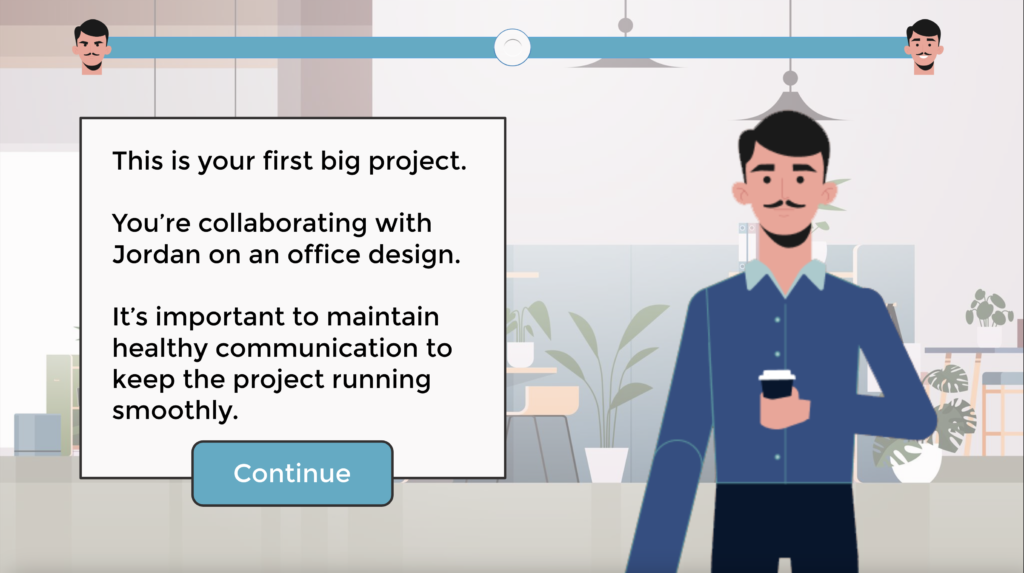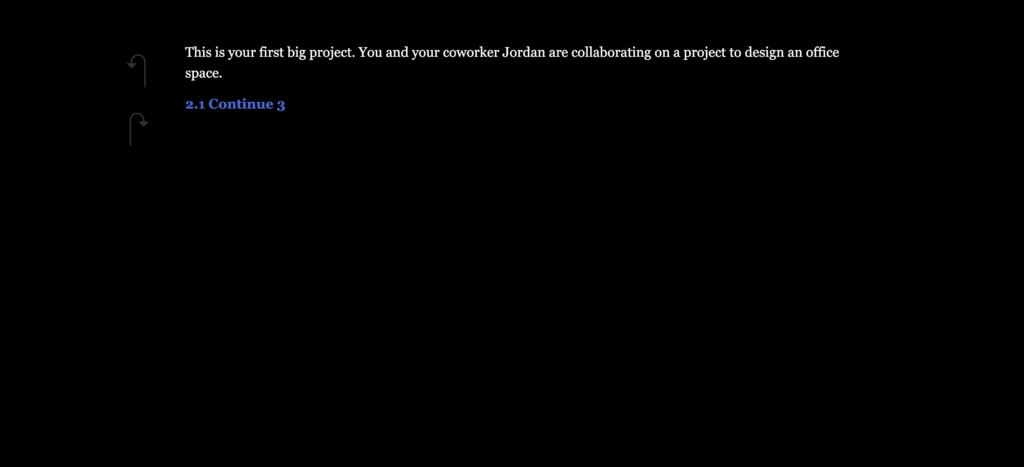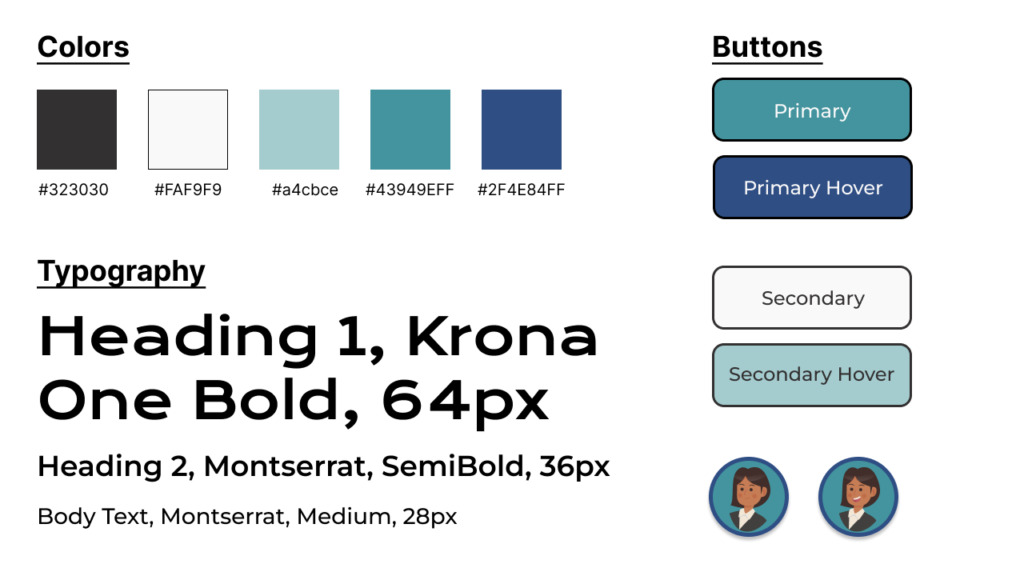Navigating Difficult Conversations
This e-learning course is an immersive onboarding experience intended to help new hires practice company policies on conflict resolution. By training employees to address conflicts immediately, the organization can maintain high-performing teams, prevent issues from escalating, and improve the employee experience.
Audience: New hires at a design company.
Responsibilities: Instructional Design, eLearning Development, Visual Design, Storyboarding, Action Mapping, Prototyping, SME Interviews
Tools Used: Articulate Storyline, Adobe Illustrator, Figma, Twine, MindMeister, Google Workspace
Overview
Artisan Design Haven (a fictitious client for this project) relies upon high-performing teams to complete complex projects in a timely and professional manner. However, an increase in interpersonal conflicts among team members has reduced team morale, overloaded managers who must facilitate any miscommunication issues, and affected client satisfaction with the company’s customer service.
After analyzing the performance problem, I confirmed that employees were not trained in conflict resolution skills that handle uncomfortable conversations professionally. Without clear protocols, employees are left to engage in conflict using individualized approaches, which can be inconsistent and counterproductive. I proposed a scenario-based eLearning experience where employees can practice how to directly approach and respectfully discuss workplace issues according to company policies.
The goal was to increase employee satisfaction and reduce the financial impacts of the problem by providing new hires with a risk-free environment to make choices and experience consequences. This helps learners understand the real-world impact of their communication skills. I also proposed incorporating a gamified “Morale” meter that provides feedback on the learner’s choices.


process
Action Mapping + Research

Interactive Script Prototype
Once the action map was confirmed, I began developing the script in Twine. I framed the scenario as an interior designer’s first day on the job and consulted with my SME to make sure the choices were grounded in reality.
Even though many interpersonal conflicts could’ve been chosen for this scenario, I chose to focus on what the learner would say to their coworker who has chosen mismatched color fabrics. The circumstances of the scenario fit what an interior designer might experience, and lent reality to the story. However, anybody can interact with this learning experience because the learner must make choices as to how they would approach a coworker who is doing something outside of the purview of a project. This miscommunication could occur in other industries with a different context, yet the conflict resolution choices would still be the same.


I also chose Twine because it has a preview capability that allowed me to share the script with my SME without distractions from graphics or buttons. After applying feedback, the script was approved, and I then began developing the visuals.


Text-Based Storyboard
Once the script was completed, a text-based storyboard was developed.
At every decision point, the learner can choose to consult with the mentor, Lori. Each incorrect choice leads to a negative outcome, using a “show, don’t tell” feedback approach. The expressions and responses of the coworker Jordan, as well as the “Morale” meter, provide contextual feedback. The learner is prompted to “Try Again” when they choose a wrong answer.
Not all incorrect answers lead to failure. Some choices do move the learner forward, even if there is a negative outcome. This mirrors the reality that in a difficult conversation, mistakes might happen but there is a chance to get back on the right path

Visual Mock-Ups
After the completion of the text-based storyboard, I began creating wireframes using Figma. The wireframes provided an outline of the project’s design and ensured there was consistency in the visual design. Next, high-fidelity mock-ups were created to give the stakeholders a clear sense of what to expect from the graphics. To align with the brand of the company, a contemporary color scheme was chosen, and modern design backgrounds were included to match the upscale interiors of the company’s location.




Full Development
Once the high-fidelity mock-ups were approved, full development began in Articulate Storyline. By first spacing and designing everything in Figma, I was able to easily and quickly configure the Storyline slides, and focus on the interactivity. The illustrations were properly sized, arranged, and recolored in Adobe Illustrator to ensure graphics were crisp and clean.
Features
- Custom Visuals: All visuals were sourced from an external resource library and edited in Photoshop for a cohesive and contemporary look. This included resizing, editing layers, and recoloring individual elements.
- Prescriptive Feedback – Mentor: For each question, the learner can access the mentor, Lori, who provides concise guidance. The mentor guides the learner to the right behavior by providing a clear choice and the rationale for it. I created the mentor button in Photoshop to accompany each question. A hover layer was added to show the mentor smiling happily to encourage learners to select the mentor for assistance.
- Gamification – Morale Meter: I incorporated the morale meter to add a gamification element meant to boost learner engagement and provide context for the coworker’s emotional responses. The meter also provides immediate feedback directly related to what the learner chooses to do or say, ultimately leading to a performance review from the manager character. The one choice that does not result in a meter change is the choice to “Talk to a manager.” This was intentionally a neutral choice to encourage open dialogue from a new hire who may feel unsure of what to do. According to my SME, helping employees feel comfortable asking questions to their superiors is a behavior that should not be discouraged.
